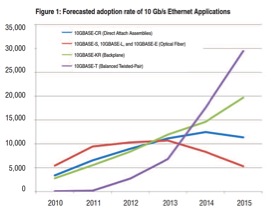IT now consumes 10% of the world’s electricity
In a recent article from The UK register, new estimates are out that show IT now consumes 10% of the world’s electricity. The increases can be tracked to many things including BYOD initiatives, data center growth, and the increase in internet sites to name a few. With increasing pressure to lower power consumption whether it be from a green standpoint or just lowering the bottom line costs, IT professionals are tasked with finding more energy efficient ways to compute and support business needs in parallel.
SDN and newer fabric based technologies can help. These technologies can be delivered with centralized switches nearly eliminating unused ports. Likewise with SDN, assets can be placed on the data center floor where they make the most sense for power and cooling and assigned to the network needed without having to physically move them.
Stranded power (power allocated and not used) becomes much easier to manage in a more stagnant data center. Decommissioning of unused equipmetn is critical in maintaining the balance.
Where do you think power will be in 10 years? Hopefully we continue to learn to compute smarter. Active electronics manufacturers continue to improve their products. Design and layout matter more now than ever. But most importantly, and like we have been saying all along, it’s time to view the data center as an ecosystem. Every department that uses a data center has a responsibility to that ecosystem. It’s time for decisions to stop being made in department silos, but rather by the ecosystem support team.

